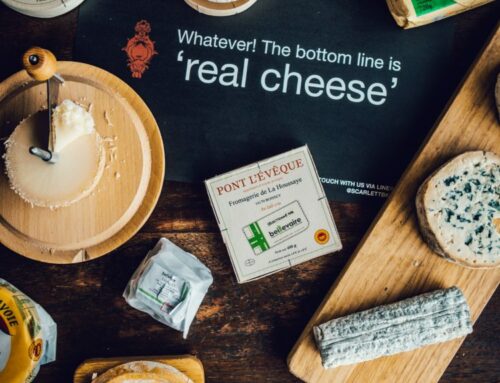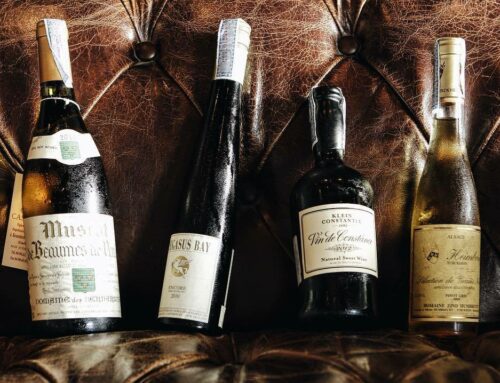Have you ever gotten confused with all the names of the different cuts of beef when you are at the restaurant and wondering what to choose? Or what makes each of them different and special? Would you like to know how steak should be cooked, or what is the most tender steak you can order?
Don’t worry, we know the struggle and we are here to enlighten you! Read on to find out more about the distinctive characteristics of different cuts of beef, mainly the most common ones, and what are the best cooking methods for each of them. Knowing what makes each steak unique will enable you to have an even better culinary experience when ordering a beef dish.
First off, let’s start with the differences in each cut of beef. Before you sink your teeth into your next steak, what you need to know is that the cow is broken down into primal cuts which include the loin, sirloin, rib, brisket round, chuck, flank and more. These primal cuts are then broken down into sub-primal cuts, such as flank steak, flat iron steak, filet mignon and rib eye.
Rib Cuts
As the name suggests, it is a cut from the rib area. This part produces prime rib, short rib, ribeye steak and ribeye roasts. As they come from a fattier cut of beef, they are known for their juiciness, tenderness, superb marbling and succulent flavour. They are best cooked over dry heat and some of taste even better when slow-cooked or roasted.
Prime Ribs
Also known as Côte de Boeuf, it is a larger cut of beef that comes with bone and boasts a superior taste due to its fat marbling that creates a juicy mouthfeel and exquisite flavour. The traditional way to prepare prime rib is to cook it in its own juice to prevent it from drying while being roasted.
This cut of beef is a crowd favourite in our restaurants; you can experience a succulent 1kg La Côte de Boeuf (beef prime rib) at Scarlett Bangkok and Scarlett Hong Kong. If you are in Singapore, you can also sink your teeth into the free-range Australian Angus Côte de Boeuf at Ginett. Or when in Yangon, visit Babett and order the juicy Australian Wagyu Prime Rib, served straight from the charcoal grill!

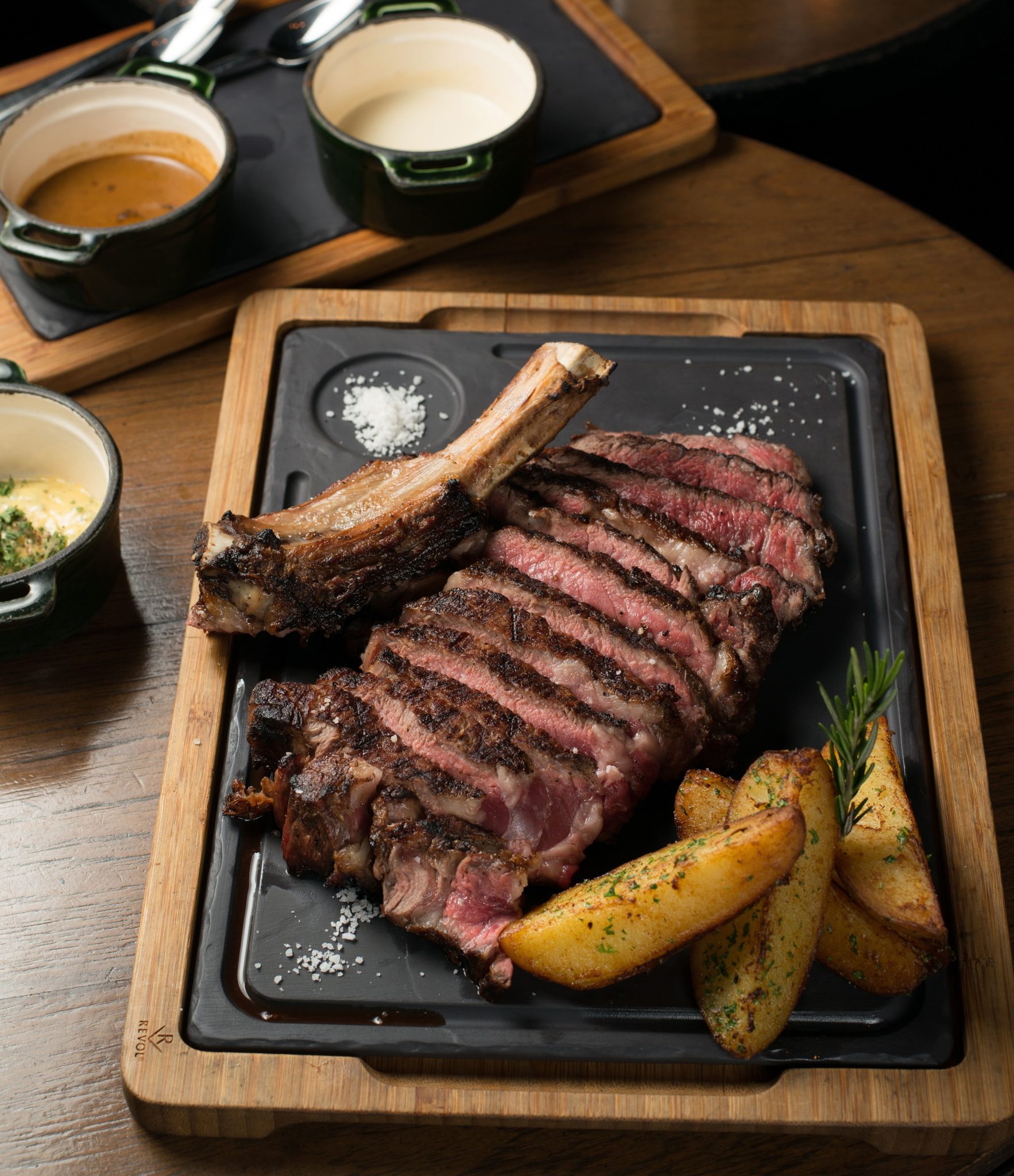
Rib Eye
Also called beauty steak, the rib eye has just the right amount of fat and comes from the same cut as the prime rib, but to be considered as a rib eye steak, the bones have to be removed. With its subtle fat marbling and amazingly beefy yet nutty flavour, the rib eye steak is at its most delicious when grilled.
At Scarlett Bangkok, it is one of our most popular and tasty cuts, which you can try in 3 different varieties, which are: grain-fed dry-aged Australian wagyu rib eye, grain-fed Australian wagyu rib eye and grass-fed Australian angus rib eye. If you are not sure which one to pick, do not hesitate to ask for recommendations from our friendly staff.
In Singapore, take advantange of ‘Let’s Meat’ at Ginett every Mondays, a special weekly offer where you can enjoy a juicy meat platter that is perfect for sharing. Not only does it feature an Australian black angus ribeye steak, but also a pork chop and half rotisserie chicken, all at once!
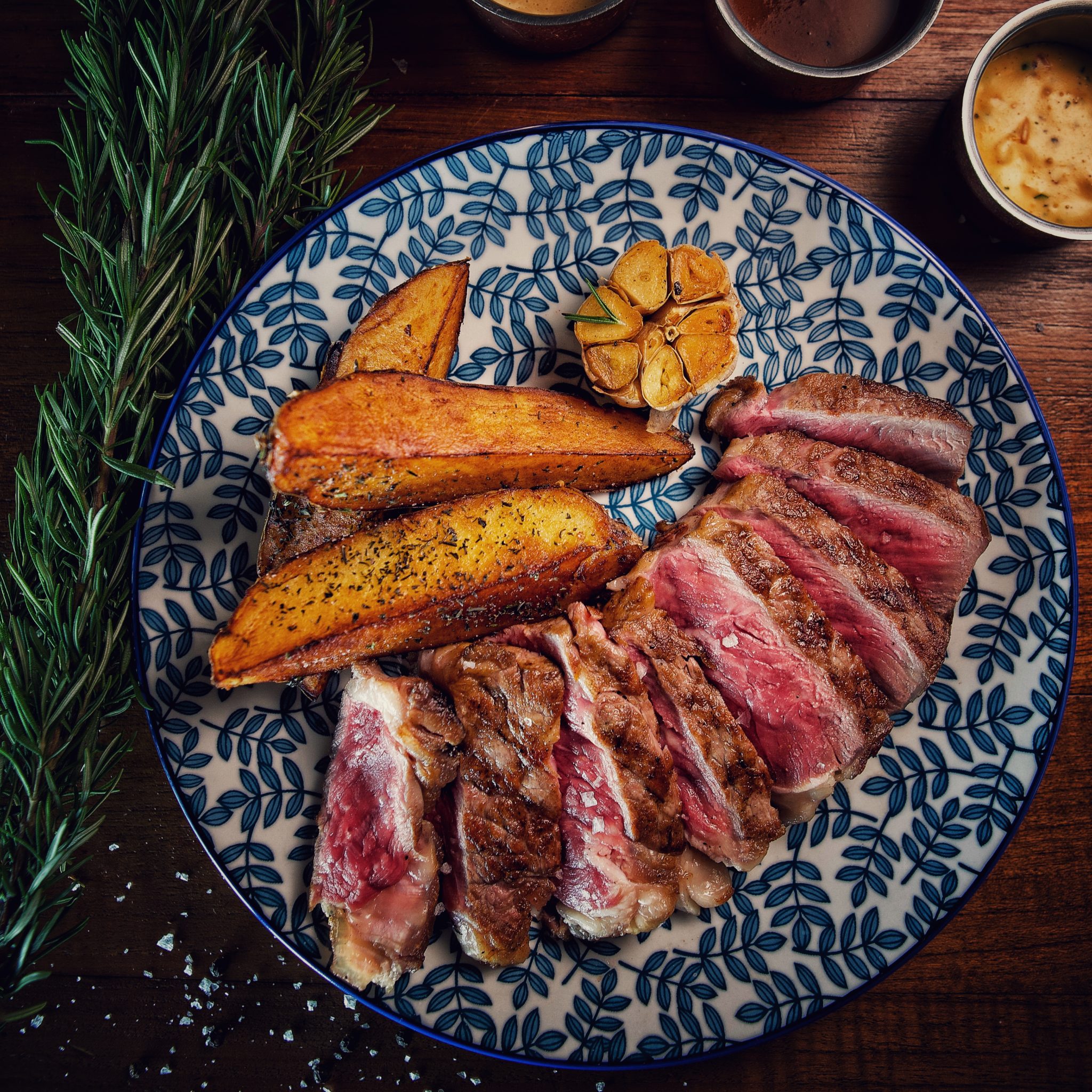
Tomahawk
The tomahawk is a bone-in rib eye steak that is ideal for sharing and boasts a well-balanced taste and marbling that guarantees an amazing experience. It is cut with at least 5 inches of French-trimmed rib bone attached. When cooked, the huge bone adds its juice and flavour to the meat, while the inter-muscular fat gives a sweet and rich gelatinous flavour to it.
Taste our signature 1.2kg of perfectly charred Australian black angus tomahawk every day at Scarlett Bangkok and The Beach Club Pattaya starting from THB 1,500++.

Short Ribs
Beef short ribs have a rich marbling with a more gelatinous fat that helps tenderize and flavour the meat when cooked. They may require longer cooking times, but are almost impossible to mess up. When done properly, the meat will be so tender that it will easily slide off the bones.
Indulge in one of our best-seller dishes, Beef Short Ribs, at Scarlett Hong Kong. This melt-in-your-mouth dish comes with teriyaki sauce, mushrooms, mashed potatoes and green peas.

Loin Cuts
The loin is one of the most tender and desirable cuts of beef, cut from the back of the cow above the ribs. Loin cuts are usually leaner cuts of beef, which include porterhouse, T-Bone steak, strip steak and filet mignon. These cuts are best grilled or pan-fried with high heat.
Tenderloin
Widely considered one of the most tender and the most expensive cuts of beef, the tenderloin is a very juicy and mild-flavoured cut that produces the famed filet mignon and Chateaubriand steaks, perfect for meat lovers. While the filet mignon is cut from the very tip of the pointy end of the tenderloin, the Chateaubriand is made from the center cut of it. The best way to cook tenderloin is by grilling or broiling it. Since the meat is very tender already, there is no need for slow-cooking.
At our restaurants, we only use hand-cut tenderloin to make our famous Beef Tartare. Enjoy a live culinary demonstration from our staff as they prepare this delectable dish right at your table when you dine at Scarlett Bangkok or Babett Yangon.
Or if you are looking for a more hearty steak to devour, give the iconic Le Chateaubriand a try. Available throughout our 4 outlets; Scarlett Bangkok, Scarlett Hong Kong, Ginett Singapore and Babett Yangon, this 600g cut of beef will sure satisfy your cravings.


Striploin
Also known as New York steak, this is half of the porterhouse or T-bone without a filet mignon. Still very tender, although slightly less than the filet mignon.
At Ginett Singapore, experience different types of Striploin; from dry-aged Australian Black Angus MB3+, to Tajima Wagyu Beef Marbling M5 (considered one of the finest grades of beef in the world!) and Rosedale Ruby Pure Australian Beef. All served at 250g., they are cooked to your liking so just pick your favourite and let the staff know how you want it.
Porterhouse
Did you know that this is basically a 2-for-1 cut? It consists of a tenderloin AND a strip loin, which are connected by a T-shaped bone. It is a prized steakhouse cut due to its large size, tender texture and deep meaty flavour.
T-Bone Steak
The reason it is called T-Bone is because the steak bone itself forms a “T” shape. Even though it is almost identical to the porterhouse, it includes less filet mignon and is cut further forward on the loin.

Sirloin Cuts
The sirloin is cut from the back of the cow, just past the short loin. It’s similar to the porterhouse and T-bone. Though not as tender due to its smaller fat percentage, it is still very flavourful, with a nutty touch. It contains the top sirloin, bottom sirloin, centre cut sirloin steaks, the tri-tip steak, filet of sirloin and the ball tip roast. Sirloin cuts are best grilled, but can also be broiled, sautéed, or pan-fried to get the best flavour and texture experience out of them.
Brisket Cuts
Brisket comes from the breast or the lower portion of the cow. Since this part of muscle has a lot of connective tissue, this cut tend to be quite tough. The best way to cook it is to slowly smoke or braise it, to give it more tenderness and create a melt-in-your-mouth texture.
Round Cuts
This part of cut comes from the back legs of the cow, which is a lean cut of meat with a small percentage of fat, making it chewy and tough. In order to make the round more tender and delicious, it is best to braise or oven-roast this type of cut.
Chuck Cuts
Tough but flavourful, this is how we would describe the chuck cuts. Coming from the heavily worked muscle group, the shoulder, most of the cuts from this area require a slow cooking method like braising, stewing or pot roasting to bring out the best of them.

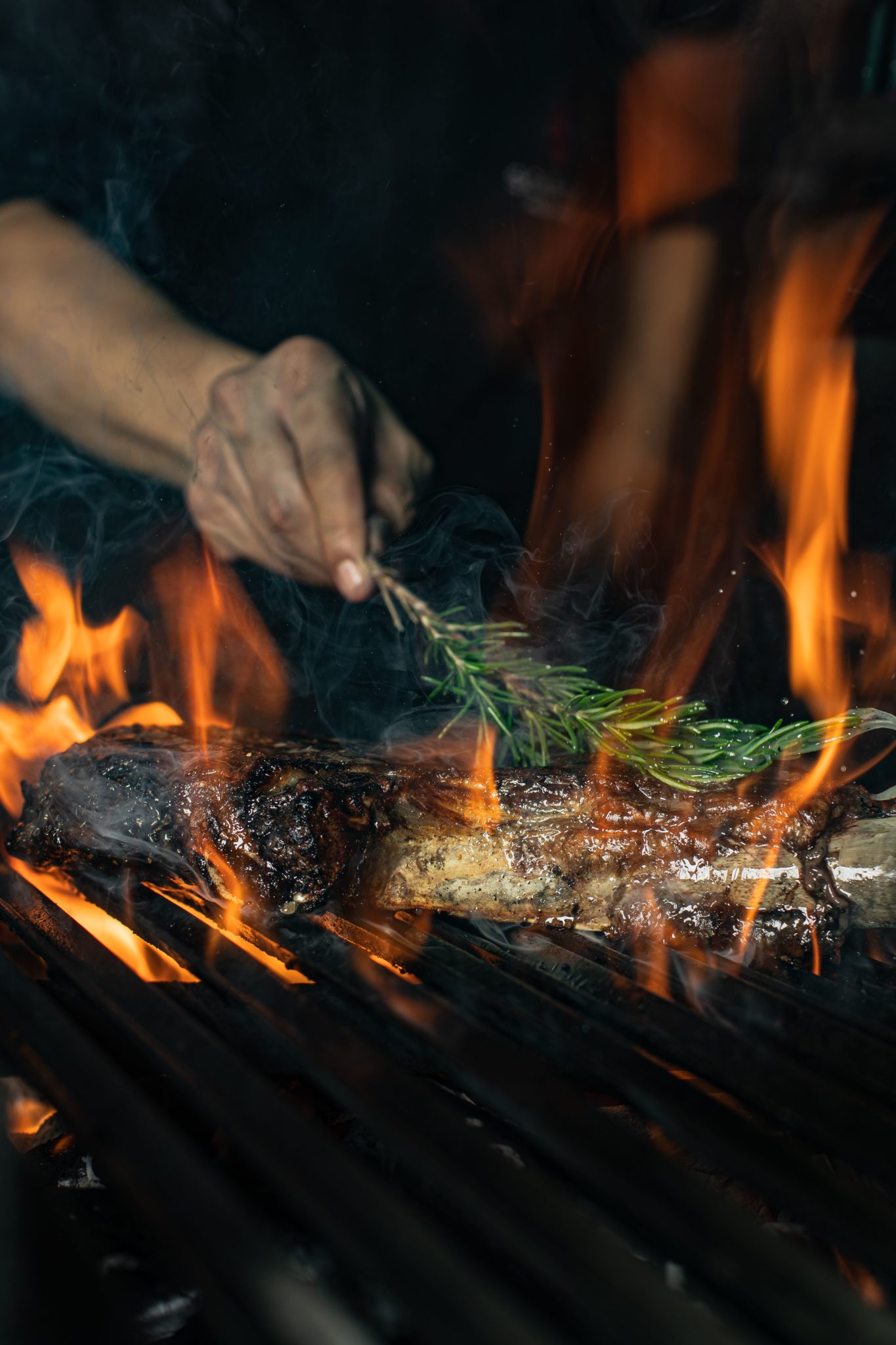
Plate & Flank Cuts
Considered some of the toughest cuts, plate and flank are taken from the abdominal muscles of the cow. In order to reduce the excessive chewiness, braising and frying are the best ways to cook them.
Other Cuts of Beef
Other cuts refer to anything that is not included in the primal cuts such as the cheeks, the tail and the organ meats. These other parts can also be amazingly delicious and nutritious when cooked right.
Beef Cheeks
Since the cheek comes from the facial muscle, which the cow uses for chewing food, this part of the meat is quite tough, but absolutely packed with flavour. Hence, it’s best served braised or slow-cooked, to enjoy a more tender texture.
Experience the mouth-watering La Joue de Boeuf, our 12 hours-braised wagyu beef cheek, delightfully soft and luscious, available every day at Scarlett Bangkok, Scarlett Hong Kong and Ginett Singapore.


